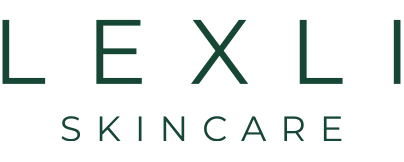It’s common to see the words “pH-balanced” on the packaging for personal care and skincare products. But do you know how pH applies to the products you use on your skin? More importantly, should you even care? We believe you should – and here’s why:
A Brief Explanation of the pH Scale
The pH scale is a system of measurement used in chemistry to indicate a substance’s degree of acidity or alkalinity. The scale ranges from 0 to 14, with 0 being the most acidic and 14 being the most alkaline (basic). At the center of the scale, at 7, is where you’ll find neutral solutions, such as pure water, which is neither an acid nor a base. Because of the effects acids and bases have on the objects with which they interact, the pH scale is a very important concept in many sciences.
The Acid Mantle
Skin is naturally coated in a thin layer of mild acids that form a protective barrier. Called the “acid mantle,” this layer on the surface of the skin is secreted by the sebaceous glands and prevents both the growth of bacteria on the skin and the entry of pathogens into the blood stream. The acid mantle also keeps our skin smooth, hydrated, and flexible.
Because of the acid mantle, the natural pH of the epidermis (the outer layer of skin) is acidic, sitting slightly below 5 on the pH scale. Most individuals will find, however, that their skin pH tends to be a bit less acidic, falling somewhere between 5 and 6. This is because various factors impact the acid mantle, including use of soaps and other products that touch our skin; environmental factors, such as pollution; diet; and more. As the acid mantle deteriorates, the skin experiences increased trans-epidermal water loss and, with that, becomes prone to dryness and irritation. In cases where the acid mantle has been significantly diminished, the skin is also more susceptible to issues like eczema and dermatitis, as well as infections. What’s more, collagen begins to break down, leading to wrinkles and sagging.
pH and Skin Aging
Speaking of wrinkles, there's reason to believe that keeping your skin's pH in balance could help to prevent the signs of aging. According to a study in the British Journal of Dermatology, women whose skin was more alkaline were found to have "faster persistent wrinkling."
The pH Scale & Your Skincare Products
Products that are pH-balanced feature a pH level similar to that of the skin and, as such, do not significantly impact the acid mantle. In general, this is a good thing, as constant use of products that are too acidic or alkaline could damage the skin. Certain products that fall outside the skin’s pH range can be beneficial, however. For example, facial cleansers and body washes that are slightly more alkaline than the skin can effectively lift dirt, makeup and oil from its surface. Exfoliators that are significantly more acidic than the skin can effectively thin the keratin layer (dead skin cells), thereby improving skin aesthetics.
The simple rule to follow is this: avoid, or at least minimize, the use of products that are significantly more alkaline than the skin, such as soap, which has a pH ranging between 9 and 10, and hand sanitizers, with a pH around 7. Best results come from using products with a pH of 6.5 or less. Also, be careful to not over-wash the skin and to do so with a mild cleanser specifically formulated for the face. Finally, while exfoliation is one of the most effective ways to achieve more beautiful skin, slowly work up the frequency with which you implement this step to allow your skin time to adjust and follow exfoliation with the use of nurturing products that help to rebuild the skin's barrier.
Finally, if you’re curious about the pH of your skin care products, consider purchasing pH test strips. By simply dipping this type of paper into your skin care formulation, you can quickly determine where it falls on the pH scale.

Interested in learning more? Download your free copy of the skin care ebook written by Lexli founder and lead product formulator, Dr. Ahmed Abdullah!
If your skin had a user's manual, this would be it! Get the ebook that simplifies skin care and outlines the key practices that optimize your skin's health.





